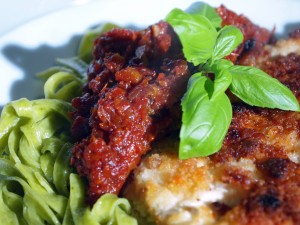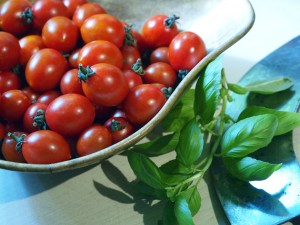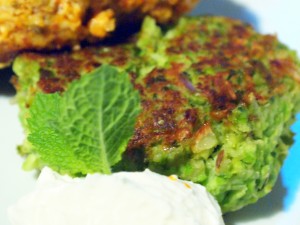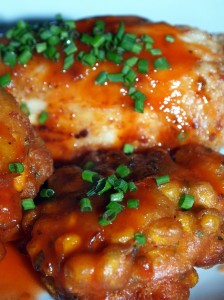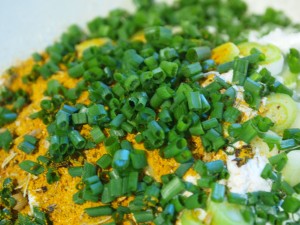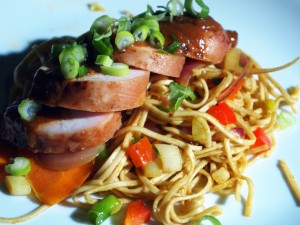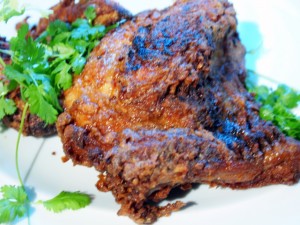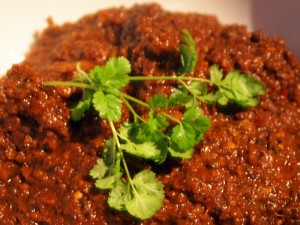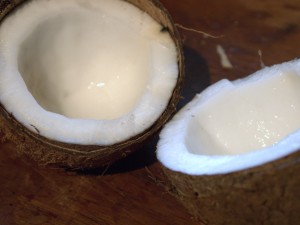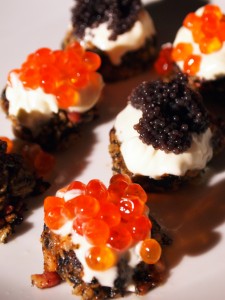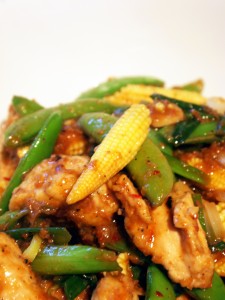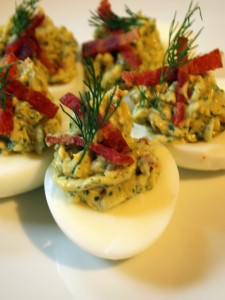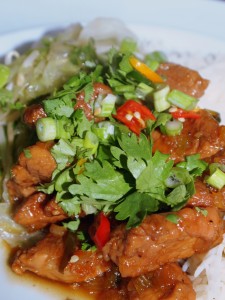 I’ll be frank here: my fear of caramel can’t really be described as healthy. I’m scared silly of the stuff and won’t cook it without gauntlet oven gloves, my biggest pair of glasses, an apron and long sleeves. So I like to think of this recipe as a sort of delicious therapy – and it tastes so good that I’m finding myself forced to cook it regularly. (Mostly by Dr W, who likes it so much that he’s insisted we have it again tonight.)
I’ll be frank here: my fear of caramel can’t really be described as healthy. I’m scared silly of the stuff and won’t cook it without gauntlet oven gloves, my biggest pair of glasses, an apron and long sleeves. So I like to think of this recipe as a sort of delicious therapy – and it tastes so good that I’m finding myself forced to cook it regularly. (Mostly by Dr W, who likes it so much that he’s insisted we have it again tonight.)
This way with caramel is a traditional Vietnamese saucing. You’ll end up with a surprisingly low-fat dish which, just to scotch any diet ambitions you had, contains five tablespoons of sugar. The caramel itself is available as a ready-made sauce in bottles in Vietnam, but if you’re cooking this dish at home you’ll have to make your own. The ready-made caramel will only save about ten minutes of your time, so this isn’t really much of a hardship.
The sauce is sweet, but not overwhelmingly so; with a bowl of white rice, you’ll find the balance between salt from the fish sauce, sweetness from the caramel and sour from the lime juice works beautifully to create a very aromatic, rich sauce. If you’re not a chilli-head, you can reduce the amount in the recipe below – but if you are, you’re in for a treat. This recipe comes together quickly, so make sure all your ingredients are chopped and prepared before you start to cook.
To serve two, you’ll need:
450g pork fillet
5 tablespoons caster sugar
2 tablespoons fish sauce
Juice of 1 lime
10 spring onions, white parts only
3 cloves garlic, crushed
2 bird’s eye chillies, chopped finely
25ml chicken stock
1 teaspoon sesame oil
1 handful fresh coriander (about 25g) and some of the green parts of the onions to sprinkle
Chop the pork into bite-sized pieces, and set aside in a bowl. Chop the spring onions and separate the white and green parts. Crush the garlic (I use a Microplane grater for garlic; it’s quicker, easier and much easier to clean than one of those garlic-squashing devices), chop the chillies, and combine the fish sauce, lime juice and chicken stock in a mug.
Put five tablespoons of sugar in the bottom of a dry saucepan, and place over a medium heat. Keep an eye on the sugar as it turns into caramel without stirring. When all the sugar has melted and is the colour of strong tea, throw the pork into the pan. Stir well to coat the pork as much as you can (the caramel will start to solidify, so you may not be able to coat all the pork), and pour in the wet ingredients. Continue to cook, stirring, for two minutes. The caramel should be dissolving in the sauce; if some solid bits are left at this stage, don’t worry about it. They’ll dissolve into the sauce as the dish continues to cook.
Throw in the spring onions, garlic and chillies with a teaspoon of salt, the sesame oil and a few turns of the peppermill. Stir to combine. Bring the sauce to a simmer and continue cooking and reducing the sauce until most of the liquid has gone, and the pork has a sticky coating of sauce.
Serve the pork over rice with a generous sprinkling of fresh coriander leaves and some of the green parts of the spring onions. This dish works very well with a cooling vegetable stir-fry – look out for a recipe later this week.

